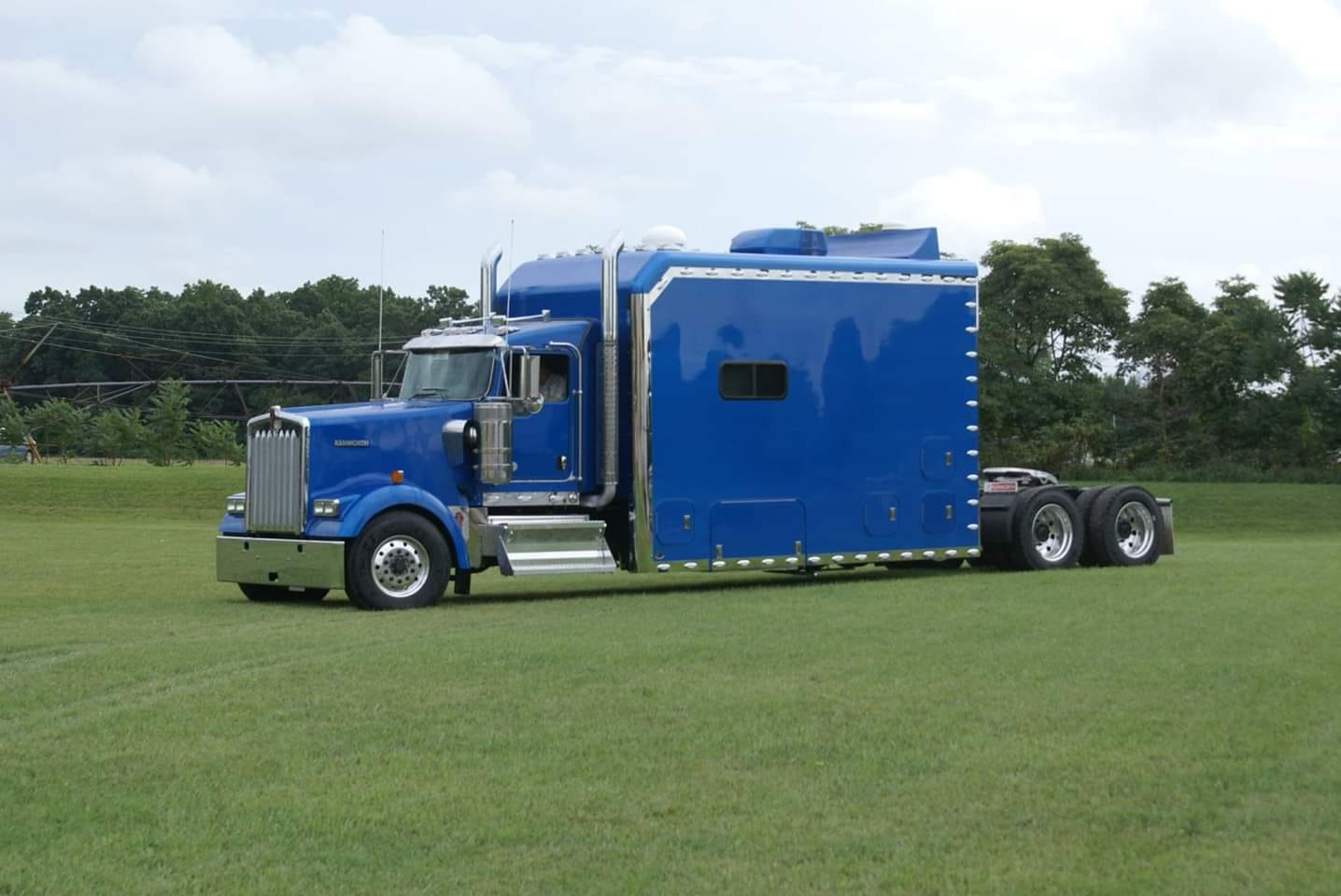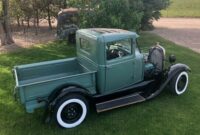Sleepers For Pickup Trucks: Your Ultimate Guide to Mobile Comfort and Adventure pickup.truckstrend.com
In an age where flexibility, adventure, and self-sufficiency are highly valued, the concept of transforming a humble pickup truck into a comfortable living space has captivated countless outdoor enthusiasts, long-haul workers, and budget-conscious travelers. "Sleepers for pickup trucks" are ingenious solutions that convert your truck’s bed into a cozy, secure, and often amenity-rich sanctuary, offering unparalleled freedom to explore without the constraints of traditional accommodation. From basic shells to fully equipped mini-RVs, these truck bed campers and conversions are redefining how we travel, work, and experience the great outdoors. This comprehensive guide will delve into everything you need to know about choosing, setting up, and maximizing your pickup truck sleeper.
Why Choose a Pickup Truck Sleeper? Benefits and Use Cases
Sleepers For Pickup Trucks: Your Ultimate Guide to Mobile Comfort and Adventure
The allure of a pickup truck sleeper lies in its unique blend of mobility, utility, and comfort. Unlike large RVs, a truck with a sleeper maintains much of its original maneuverability, allowing access to remote campsites, tight trails, and urban parking spots that bigger rigs simply can’t reach.
Key Benefits:
- Cost-Effectiveness: Significantly cheaper than purchasing an RV or consistently paying for hotels, campgrounds, or Airbnbs on your travels.
- Unmatched Mobility: Go almost anywhere your truck can, opening up a world of off-grid camping, overlanding, and exploring less-traveled paths.
- Flexibility & Convenience: Ready for spontaneous trips, last-minute adventures, or simply a convenient place to rest during long workdays.
- Privacy & Security: A personal, secure space away from prying eyes, offering a sense of home wherever you park.
- Multi-Purpose Utility: Your truck remains a functional workhorse when the sleeper isn’t in use, or the sleeper itself can be easily removed for hauling.

Common Use Cases:
- Weekend Getaways & Camping: Ideal for spontaneous trips to state parks, national forests, or secluded spots.
- Overlanding & Off-Grid Adventures: Designed for extended periods in remote locations, often equipped with solar power, water storage, and efficient kitchens.
- Work & Job Sites: Provides a comfortable and private space for construction workers, field technicians, or anyone needing to stay near a job site overnight.
- Road Trips & Nomadic Living: Offers a budget-friendly way to travel across the country, serving as a mobile home base.
- Hunting & Fishing Expeditions: A warm, dry place to sleep and store gear, especially useful in inclement weather.

Types of Pickup Truck Sleepers

The world of truck sleepers is diverse, offering solutions to fit various needs, budgets, and truck types. Understanding the main categories is crucial for making an informed decision.
-
Truck Bed Campers / Toppers with Sleeping Platforms:
- Description: These are essentially truck bed shells or caps, often made from fiberglass or aluminum, fitted over the truck’s bed. Inside, owners either build or install a modular sleeping platform that elevates the mattress above the wheel wells, creating storage space underneath.
- Pros: Most affordable entry point; lightweight; easily removable; maintains truck’s original footprint.
- Cons: Limited headroom (unless pop-up); basic amenities (no built-in kitchen/bathroom); requires DIY effort for internal build-out.
-
Slide-in Truck Campers:
- Description: Self-contained recreational vehicles designed to slide into the bed of a pickup truck. They often extend over the cab and can be surprisingly amenity-rich, featuring kitchenettes, small bathrooms (wet baths), sleeping areas, and dining nooks.
- Pros: Full RV amenities in a compact form; comfortable and insulated; can be removed at a campsite to use the truck for exploration.
- Cons: Heavier and more expensive; requires a truck with sufficient payload capacity (often a heavy-duty model); impacts fuel economy and handling; takes up significant storage space when removed.
-
Custom Built / DIY Sleepers:
- Description: Solutions crafted from scratch by the truck owner, often utilizing plywood, insulation, and repurposed materials. These can range from simple sleeping platforms to elaborate, fully integrated living spaces.
- Pros: Highly customizable to specific needs and aesthetics; most cost-effective if you have the skills; a rewarding personal project.
- Cons: Requires time, tools, and technical skills; may lack professional finishes or amenities; potential for less robust construction if not done correctly.
-
Overland Pop-Top Campers:
- Description: A hybrid solution, these are typically integrated shells or body replacements that feature a pop-up roof. When closed, they maintain a low profile for off-road travel; when popped, they offer standing room and increased ventilation.
- Pros: Excellent for off-roading due to low center of gravity; provides standing height when deployed; often well-insulated and rugged.
- Cons: Generally more expensive than basic toppers; complex mechanisms; might require professional installation.
Key Considerations When Choosing a Sleeper
Selecting the right sleeper involves more than just picking a type; it requires careful consideration of your truck, your lifestyle, and your budget.
-
Truck Compatibility:
- Bed Size: Is your truck a short bed (5.5 ft), standard bed (6.5 ft), or long bed (8 ft)? This dictates the length of the sleeper unit you can accommodate.
- Payload Capacity: Crucial for slide-in campers. Exceeding your truck’s Gross Vehicle Weight Rating (GVWR) is dangerous and illegal. Check your truck’s manual and factor in the weight of the camper, gear, water, and passengers.
- Suspension: Heavy campers may require suspension upgrades (airbags, heavier leaf springs) to maintain stability and ride height.
-
Your Needs & Budget:
- Occupancy: How many people will be sleeping in it regularly?
- Amenities: Do you need a kitchen, toilet, shower, heating, or AC? Or just a basic bed?
- Frequency of Use: Will it be a weekend warrior or a full-time home?
- Budget: Prices vary wildly from a few hundred dollars for DIY materials to tens of thousands for high-end slide-ins.
-
Weight Distribution & Safety:
- Adding significant weight, especially high up, affects your truck’s handling, braking, and stability. Always load heavy items low and forward.
- Ensure proper tie-downs for slide-in campers to prevent shifting.
-
Climate & Insulation:
- Consider the temperatures you’ll encounter. Good insulation is vital for comfort in extreme heat or cold.
- Ventilation (fans, windows) is essential to prevent condensation and keep the interior fresh.
-
Storage & Organization:
- Space is precious. Look for designs that maximize storage, offer built-in compartments, and allow for efficient organization of gear, food, and clothing.
Installation and Setup
While specific instructions vary by sleeper type, here are general steps for installation and setting up your truck sleeper:
- Preparation: Clear your truck bed of any debris. For slide-in campers, ensure your truck’s tailgate can be removed if necessary.
- Loading/Mounting:
- Toppers: Typically clamp onto the truck bed rails. Ensure a tight, secure fit to prevent leaks and movement.
- Slide-ins: Often require a forklift or specialized camper jacks to lift and slide the unit into the truck bed. Guide it carefully, ensuring it’s centered.
- Securing:
- Toppers: Use the provided clamps or bolt-down kits.
- Slide-ins: Utilize heavy-duty tie-downs (frame-mounted or bumper-mounted) that secure the camper to the truck’s frame, not just the bed. This is critical for safety.
- Electrical Connections: Connect the camper’s wiring harness to your truck’s electrical system (often a 7-pin trailer connector) for running lights, interior lights, and charging house batteries. Consider adding a DC-DC charger or solar setup for off-grid power.
- Water Systems (if applicable): Fill fresh water tanks, connect any hoses for sinks or showers, and ensure grey/black water tanks are ready for use.
- Leveling: When parked, use leveling blocks or jacks to ensure your truck and sleeper are level for comfortable sleeping and proper appliance function.
Tips for Maximizing Your Sleeper Experience
- Efficient Packing: Use soft-sided bags, collapsible containers, and multi-functional items to save space.
- Solar Power: Invest in a reliable solar panel setup to keep your batteries charged for lights, fans, and device charging, especially for off-grid adventures.
- Portable Cooking: A portable propane stove, cooler, or 12V refrigerator can significantly enhance your culinary capabilities.
- Quality Bedding: Don’t skimp on a comfortable mattress and bedding. A good night’s sleep is paramount.
- Privacy & Security: Install blackout curtains or window coverings for privacy. Consider simple security measures like door locks, window alarms, or a motion-sensing light.
- Ventilation: Even in cold weather, crack a window or use a small fan to prevent condensation buildup, which can lead to mold.
- Maintenance: Regularly check seals for leaks, inspect electrical connections, and maintain your truck’s tires and suspension.
Challenges and Solutions
While truck sleepers offer immense freedom, they come with unique challenges:
- Limited Space:
- Solution: Embrace minimalism, utilize vertical storage, invest in multi-functional furniture (e.g., a bench that converts to a table), and use clever organization systems.
- Lack of Full Bathroom:
- Solution: For basic toppers, rely on public restrooms, portable camping toilets, or dig cat holes responsibly. Slide-in campers often have small wet baths.
- Temperature Control:
- Solution: Good insulation is key. Portable propane or diesel heaters are excellent for cold weather, while 12V fans or small portable AC units (if you have sufficient power) can help in heat.
- Security Concerns:
- Solution: Park in well-lit, secure areas. Use window coverings. Consider adding additional locks, a basic alarm system, or security cameras.
- Payload Limitations (for slide-ins):
- Solution: Carefully calculate your truck’s payload. Don’t overload. Consider lightweight gear and materials. Upgrade suspension if necessary.
Price Table: Estimated Costs for Pickup Truck Sleepers
| Type of Sleeper | Price Range (New) | Key Features Included (Typical) | Pros | Cons |
|---|---|---|---|---|
| Truck Bed Topper/Shell | $1,500 – $5,000 | Basic weather protection, secure storage, often includes windows/lights. DIY sleeping platform. | Lightweight, affordable, easily removable, maintains truck’s profile. | Very basic amenities, requires DIY interior build-out, limited headroom, not insulated for extreme temps. |
| DIY Custom Build | $500 – $3,000 (materials only) | Highly customizable to specific needs, basic insulation, custom storage. | Most cost-effective (if handy), fully tailored to individual preferences. | Requires significant time/skills, may lack professional finish/amenities, no resale value for materials. |
| Entry-Level Slide-in Camper | $8,000 – $20,000 | Sleeping area, small kitchenette (sink, stove), basic storage, some insulation. | More comfortable than a topper, basic amenities, good for short trips. | Heavier, still somewhat basic, limited bathroom options, requires specific truck payload. |
| Mid-Range Slide-in Camper | $20,000 – $45,000 | Sleeping area, full kitchenette, wet bath (toilet/shower), furnace, water heater, more storage. | All-in-one comfort, good for extended trips, decent insulation. | Significant weight, higher cost, affects truck handling, still compact. |
| High-End Slide-in Camper | $45,000 – $80,000+ | Premium finishes, large sleeping areas, full dry bath, extensive storage, solar, AC, larger tanks. | Luxury amenities, excellent insulation, comfortable for full-time living. | Very heavy, very expensive, often requires heavy-duty truck, significant impact on fuel economy. |
| Overland Pop-Top Camper | $10,000 – $30,000 (shell only) | Low profile for travel, pop-up roof for standing room, robust construction. | Excellent for off-roading, combines shell utility with standing height. | More expensive than basic shells, complex mechanisms, amenities often extra. |
Note: Prices are estimates and can vary widely based on brand, features, new vs. used condition, and geographical location. Installation costs and additional accessories (solar panels, extra batteries, suspension upgrades) are typically extra.
Frequently Asked Questions (FAQ)
Q: Can I just sleep in my truck bed without a dedicated sleeper?
A: Yes, many people do! With an air mattress or sleeping pad and a shell/tonneau cover for protection, it’s possible. However, dedicated sleepers offer better comfort, insulation, storage, and often more security and integrated amenities.
Q: Do I need special permits to park and sleep in my truck sleeper?
A: Generally, no specific permits are required for the sleeper itself. However, always check local ordinances for overnight parking restrictions in specific areas (e.g., city streets, public lands, Walmart parking lots). National Forests and BLM lands often allow dispersed camping.
Q: How do I manage power for lights, charging, and appliances?
A: Common solutions include:
- Truck’s 12V system: Powers basic needs, but can drain your starting battery.
- Dedicated House Battery: A separate deep-cycle battery (lead-acid, AGM, or lithium) powers the camper’s systems.
- Solar Panels: Excellent for charging house batteries off-grid.
- Shore Power: Connecting to an external power source (like at an RV park).
- DC-DC Charger: Charges your house battery from your truck’s alternator while driving.
Q: What about heating and cooling in a truck sleeper?
A: For heating, popular options include portable propane heaters (use with caution and ventilation), diesel heaters (efficient and safe), or small electric heaters (if on shore power). For cooling, 12V fans, roof vents, and small portable AC units (requiring significant power) are common. Good insulation is crucial for both.
Q: Are truck sleepers comfortable for extended periods?
A: The comfort level varies significantly by type. A basic topper with a DIY platform might be fine for a weekend. A well-equipped slide-in camper, however, can be surprisingly comfortable and suitable for weeks or even months of travel, offering many of the conveniences of home.
Q: How long does it take to set up a truck sleeper at a campsite?
A: This depends on the type. A basic topper might take minutes to get ready (just lay out your bedding). A slide-in camper might take 15-30 minutes to level, connect utilities, and deploy any pop-outs.
Q: Do truck sleepers affect fuel economy?
A: Yes. Any added weight and increased aerodynamic drag will reduce your truck’s fuel efficiency. Slide-in campers, due to their size and weight, will have the most significant impact.
Conclusion
Sleepers for pickup trucks represent a compelling blend of utility, adventure, and personal freedom. Whether you’re a weekend warrior, a dedicated overlander, or a professional needing a mobile base, there’s a truck sleeper solution designed to meet your needs. By carefully considering your truck’s capabilities, your budget, and your desired level of comfort and amenities, you can transform your pickup into a versatile home-on-wheels. The open road, remote campsites, and endless possibilities await, offering a unique way to experience the world on your terms.


